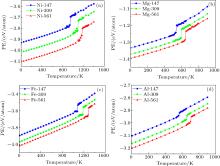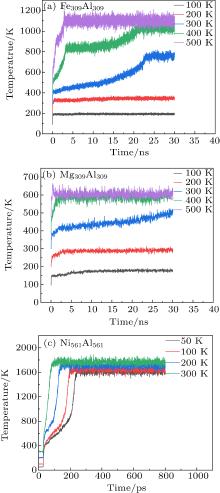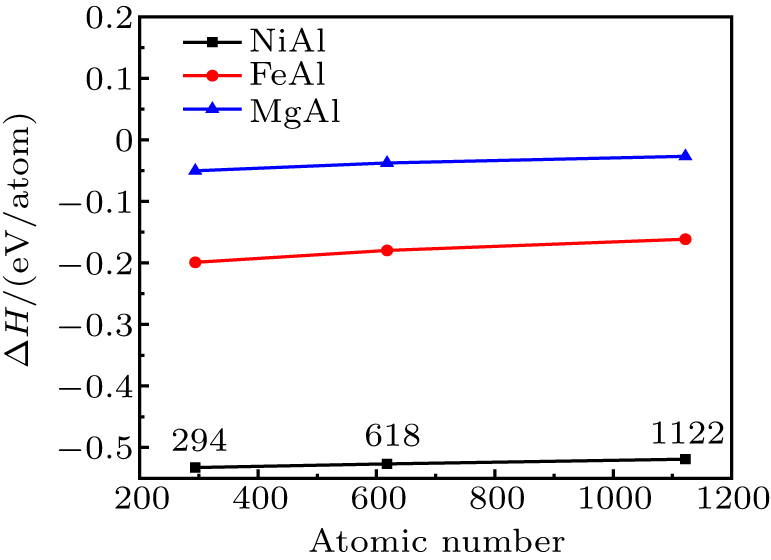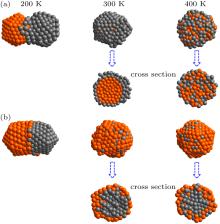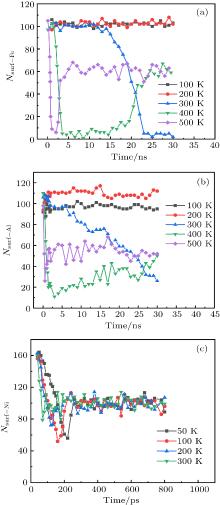中国物理B ›› 2020, Vol. 29 ›› Issue (11): 116601-.doi: 10.1088/1674-1056/aba2dd
Yuwen Zhang(张宇文)1, Yonghe Deng(邓永和)2,†( ), Qingfeng Zeng(曾庆丰)3, Dadong Wen(文大东)2, Heping Zhao(赵鹤平)1, Ming Gao(高明)1, Xiongying Dai(戴雄英)2, Anru Wu(吴安如)4
), Qingfeng Zeng(曾庆丰)3, Dadong Wen(文大东)2, Heping Zhao(赵鹤平)1, Ming Gao(高明)1, Xiongying Dai(戴雄英)2, Anru Wu(吴安如)4
Sintering reaction and microstructure of MAl (M = Ni, Fe, and Mg) nanoparticles through molecular dynamics simulation
Yuwen Zhang(张宇文)1, Yonghe Deng(邓永和)2, †, Qingfeng Zeng(曾庆丰)3, Dadong Wen(文大东)2, Heping Zhao(赵鹤平)1, Ming Gao(高明)1, Xiongying Dai(戴雄英)2, and Anru Wu(吴安如)4$
- 1 College of Physics, Mechanical and Electrical Engineering, Jishou University, Jishou 416000, China
2 School of Computational Science and Electronics, Hunan Institute of Engineering, Xiangtan 411104, China
3 School of Physics, Guizhou University, Guiyang 550025, China
4 Hunan Provincial Key Laboratory of Vehicle Power and Transmission Systems, Hunan Institute of Engineering, Xiangtan 411104, China


